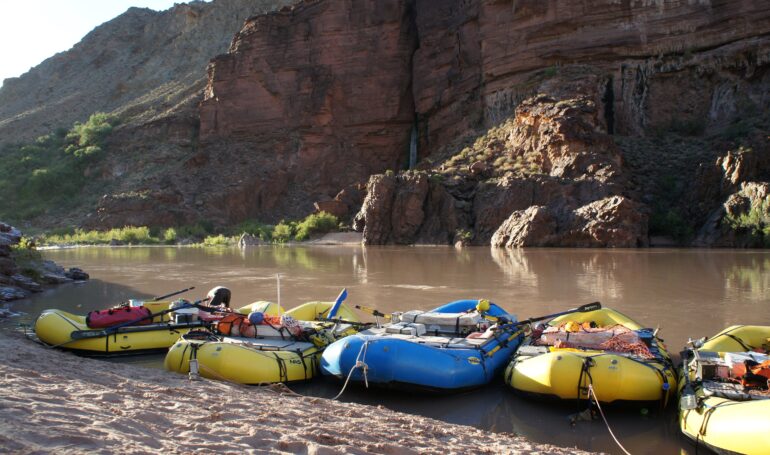
On the Colorado: Grand Canyon Gourmet
“Welcome to the Grand Canyon!” she said jovially. Then, squaring up and looking me straight in the eye in a manner conveying importance, she continued “Just so you know, you have kitchen duty tonight.”
Despite the apparent gravity of my new crewmate’s message, I replied, unfazed, “okay.”
My husband and I started at daybreak trekking a knee-crushing 4280 foot descent to meet five inflatable chariots. These oar mounted whitewater river rafts would be our ride and our home for nine days. We made it to heart of the Grand Canyon and happened to stroll onto the boating beach at the exact same moment our rafting party landed. Our serendipitous timing made it seem as if we had casually planned to meet at 10am for a cup of coffee. It just so happened that cup of coffee was at the Phantom Ranch, a place only accessible by either at 10 mile downhill hike or a 100 mile downriver paddle. 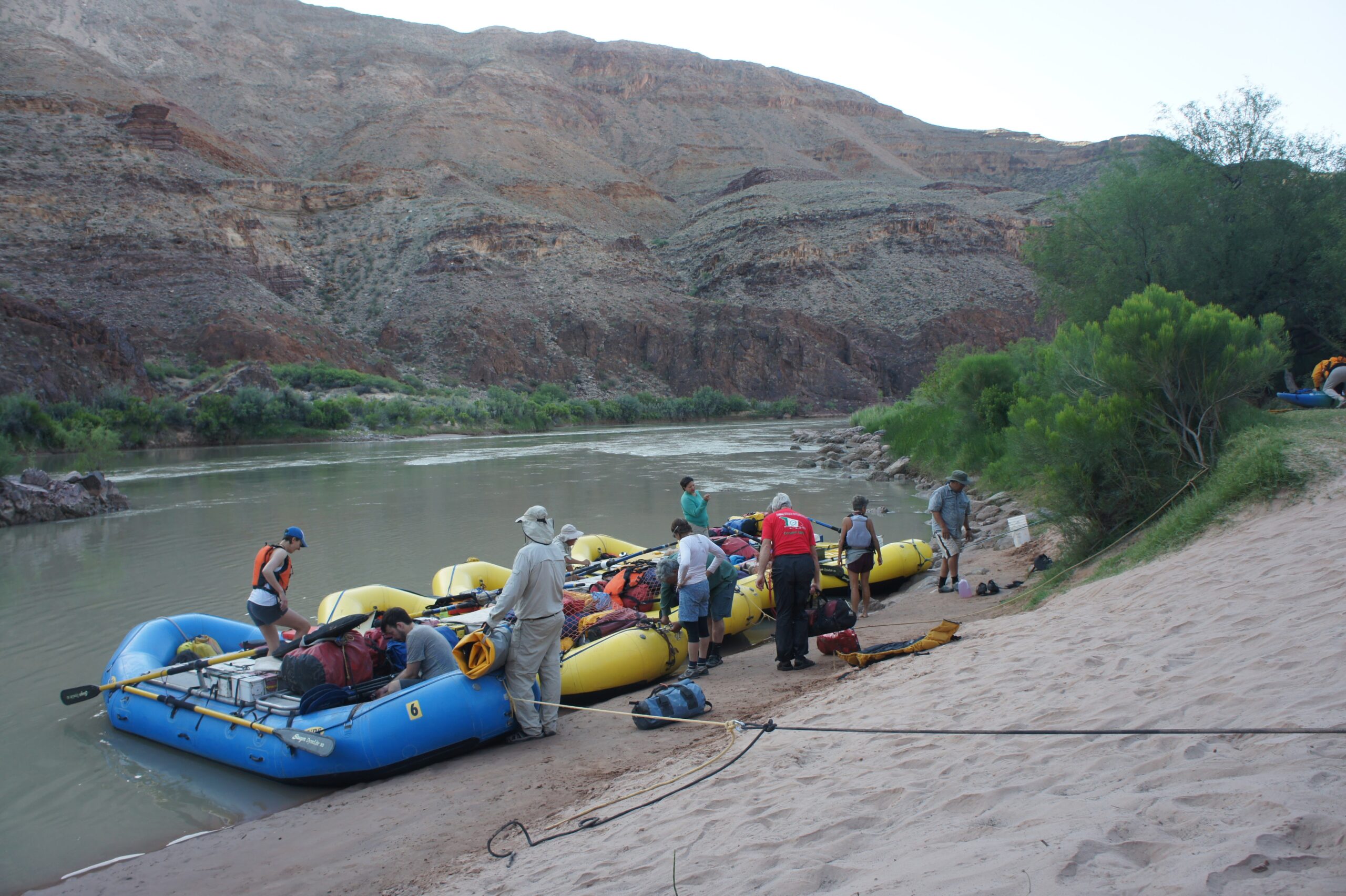
My husband and I were replacing another couple joining an 18-day private rafting trip at its halfway point. After customary introductions, food was a topic of eminent concern to a crew with eight river days behind them. Traveling through the greatest geological formation on earth offers plenty of solitude, beauty and sacrament, but three things dominate the group dynamics when rafting down the Colorado. The river itself occupies the day. Nights are given over to sleep. But, in between, it is food.
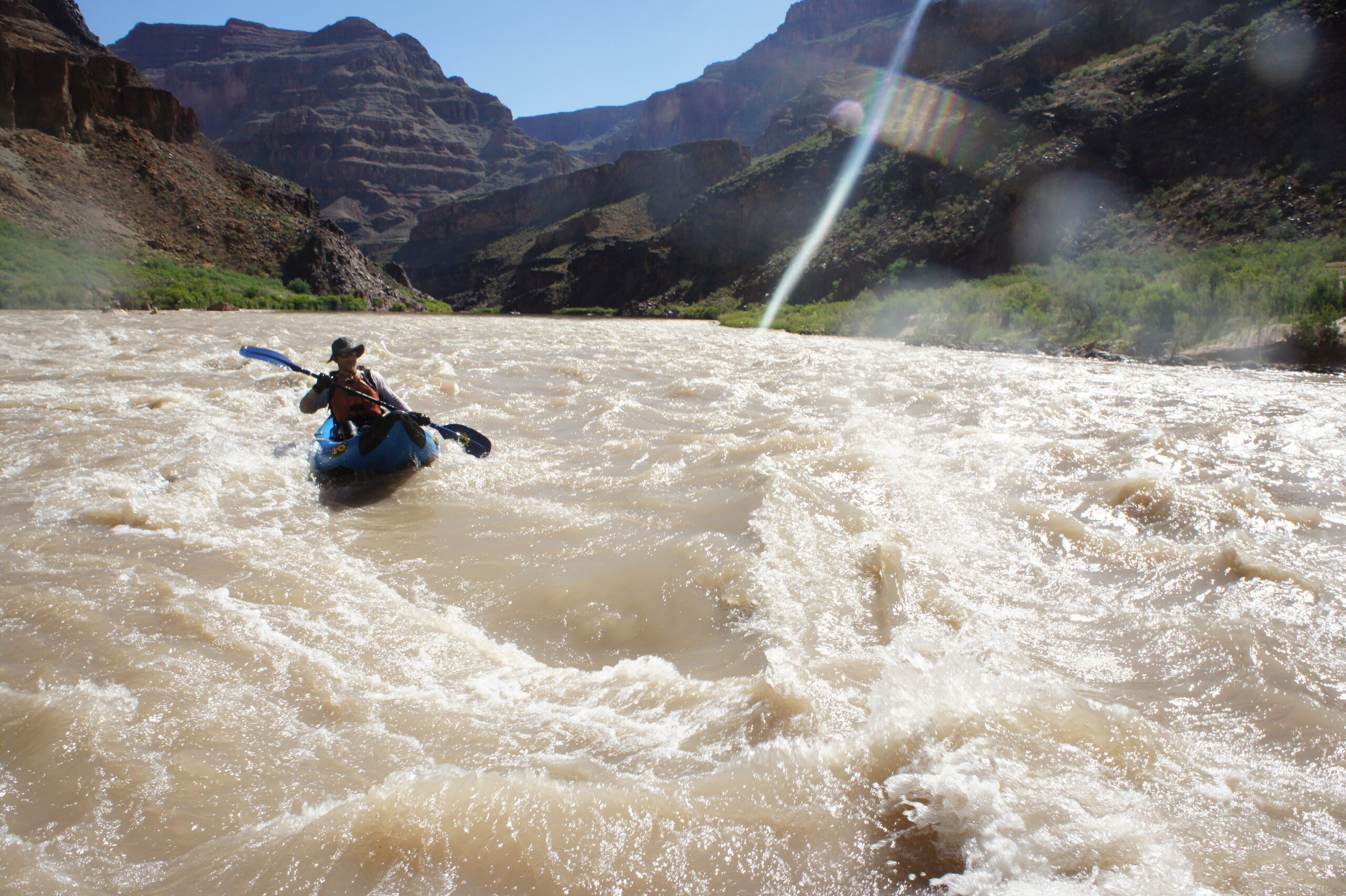
Rising with the sun, a horse, raspy voice echoes “COOOFFFFEEEE” into the canyon. This serves as not only the morning alarm, but also as a beckoning for the morning’s kitchen crew to get busy. The morning crew happens to be the same crew from dinner the previous night. Their job is to fuel everyone through breakfast and lunch before relinquishing the kitchen to the next kitchen crew.
For the next few hours, camp is a flurry of activity. A hearty affair of things like sausage, eggs, pancakes and oatmeal is made and eaten and washed down with copious amounts of coffee. Dishes washed. Camp broken down. Rafts reloaded with the provisions largely dedicated to navigating the river, making camp and feeding the crew. Finally, lunch and snacks are loaded to ensure fast access.
By the time we launch, it is 8am and the next four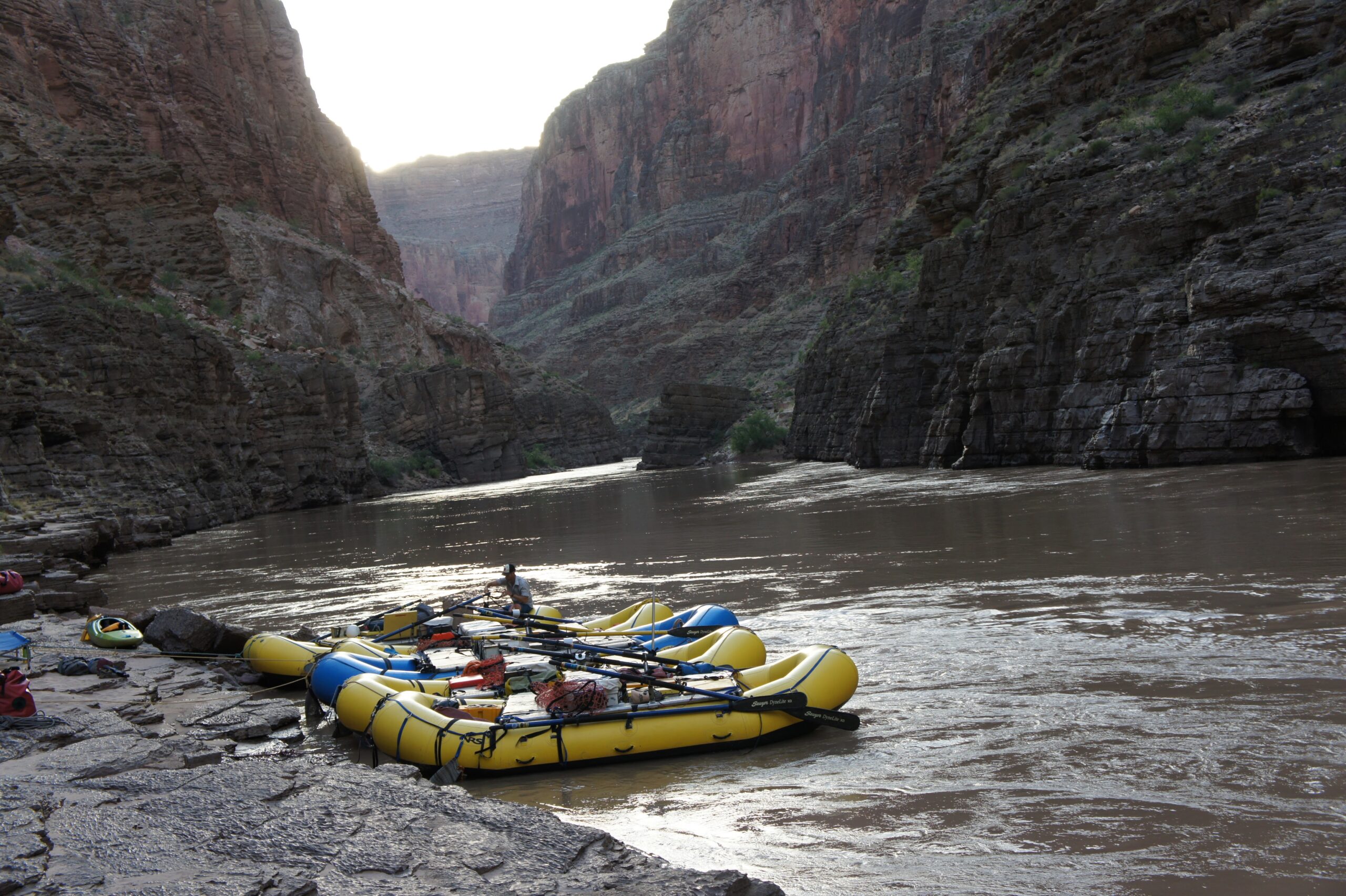 to eight hours are about the river. When the river is calm, we read it for the line of least effort. When the river is rapid, we read it for the line of least danger, but the most fun. When the river offers side attractions, we stop take in the hikes, slots, springs, pools, or petroglyphs. But with each stop, snacks or lunch are imminent, expected and happily welcomed.
to eight hours are about the river. When the river is calm, we read it for the line of least effort. When the river is rapid, we read it for the line of least danger, but the most fun. When the river offers side attractions, we stop take in the hikes, slots, springs, pools, or petroglyphs. But with each stop, snacks or lunch are imminent, expected and happily welcomed.
As the day’s miles are ticked off, the focus transitions from the river to the camp. Where’s the best spot for a kitchen? Will we be out for sun so we can cook before dusk? And directly related to eating, where do we set up the latrine?
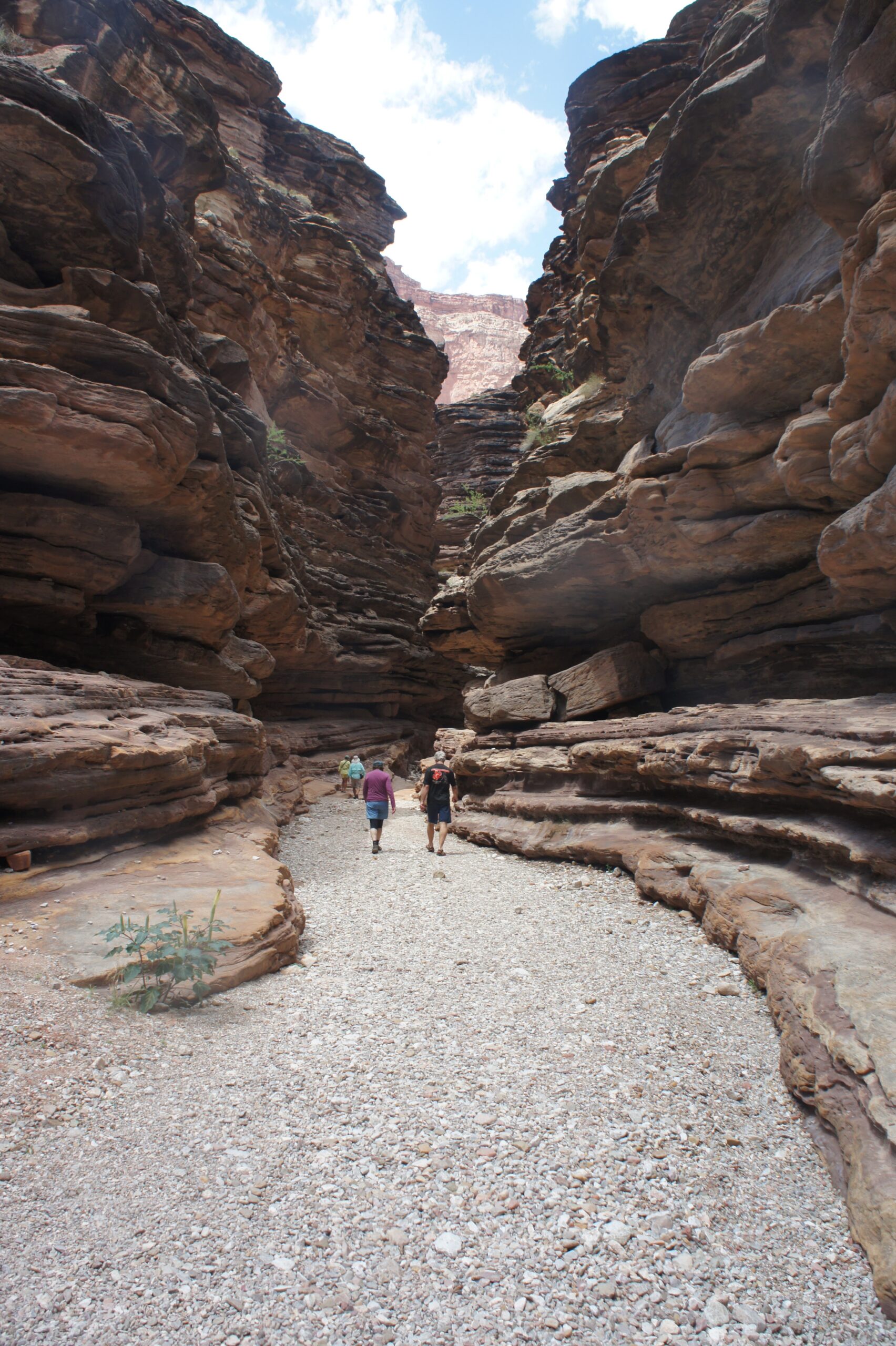 Landing at the night’s campsite brings a new flurry of activity. Finding and unloading equipment. Setting up camp. Searching for a spot to bunk. If it is cool enough and we were lucky enough to land a shady campsite, there is friendly chatter amongst the work, but prepping for the forthcoming meal is of top priority. So, unpacking commences with the search for that evening’s dinner box and setting up the mobile kitchen. Dinner brings a new kitchen crew who gets right to work on the next meal.
Landing at the night’s campsite brings a new flurry of activity. Finding and unloading equipment. Setting up camp. Searching for a spot to bunk. If it is cool enough and we were lucky enough to land a shady campsite, there is friendly chatter amongst the work, but prepping for the forthcoming meal is of top priority. So, unpacking commences with the search for that evening’s dinner box and setting up the mobile kitchen. Dinner brings a new kitchen crew who gets right to work on the next meal.
The ‘kitchen’, an open air affair, is not something that is ready and waiting at each campsite. All the necessary kitchen building blocks are artfully attached to inflatable rafts. The payload includes three folding work tables, a six-burner propane stove, a travel grill, a select few tools, and buckets and pans for settling and boiling river water. Once a foot pumped hand wash station is finally erected, our private riverside pop-up restaurant is ready for operation.
Large coolers that double as a seat for oarsmen house fresh meat, dairy and vegetables and each night’s non-perishable food kitty is stored, safe and dry, in a repurposed military-grade, .50 caliber ammunition box. If it is good enough to keep ammo 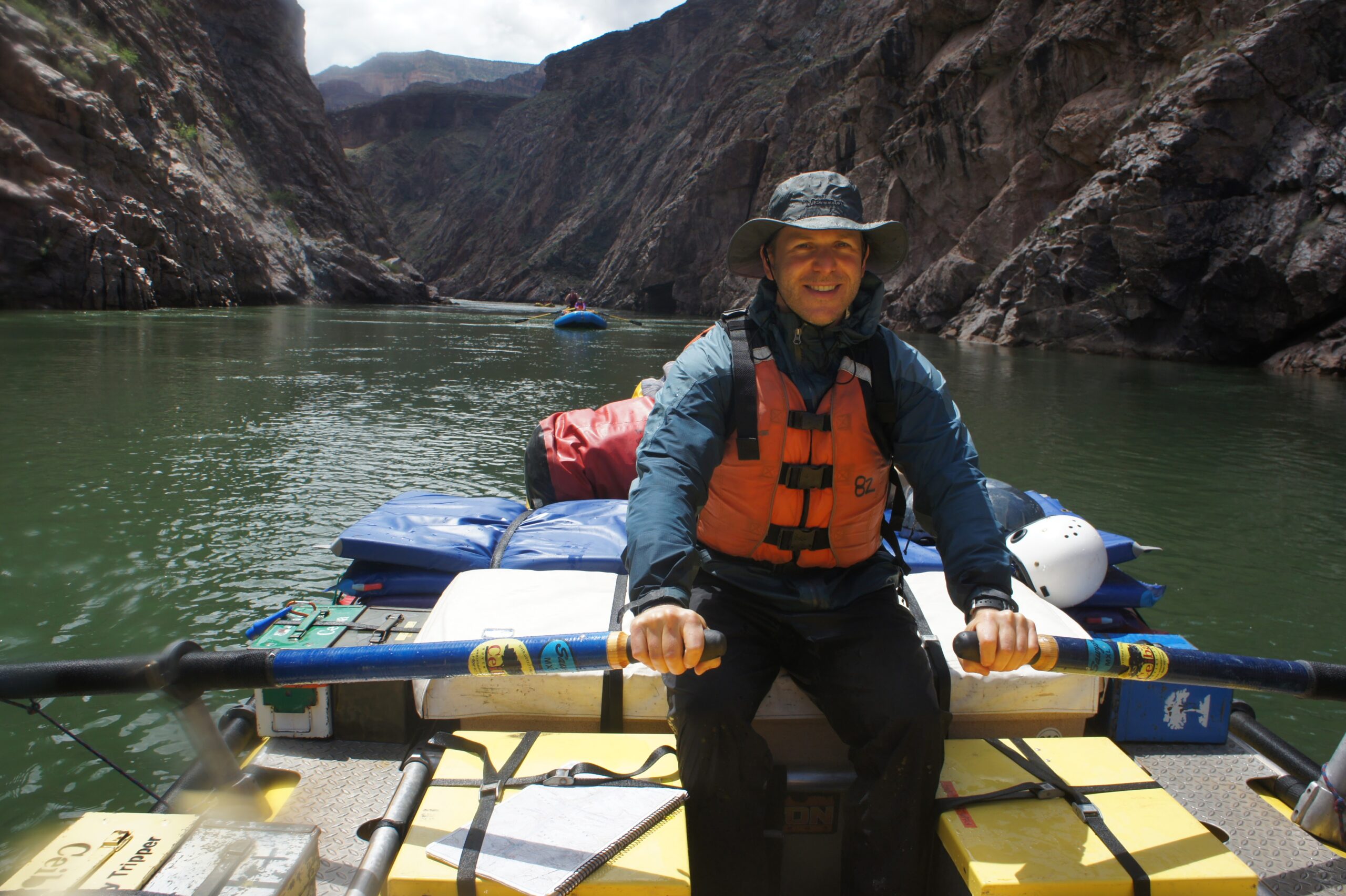 dry, then it is good enough to keep our dinner dry. With a bit of anticipation and trepidation, each evenings food box is cracked open. A typical night’s treasure starts with a quickly whipped up appetizer like hummus and veggies, or chips and dip, or the surprisingly delicious, canned smoked oysters and crackers. These appease the waiting crew while dinner in cooked.
dry, then it is good enough to keep our dinner dry. With a bit of anticipation and trepidation, each evenings food box is cracked open. A typical night’s treasure starts with a quickly whipped up appetizer like hummus and veggies, or chips and dip, or the surprisingly delicious, canned smoked oysters and crackers. These appease the waiting crew while dinner in cooked.
Considering we were in a remote desert wilderness accessible by boat, helicopter and hiking boot, one might expect dinner to consist of simple and bland fare. However, thanks to the treasures safely stored in each ammo can, the menu is ambitiously filled with shelf-stable, brightly labeled and easily recognized 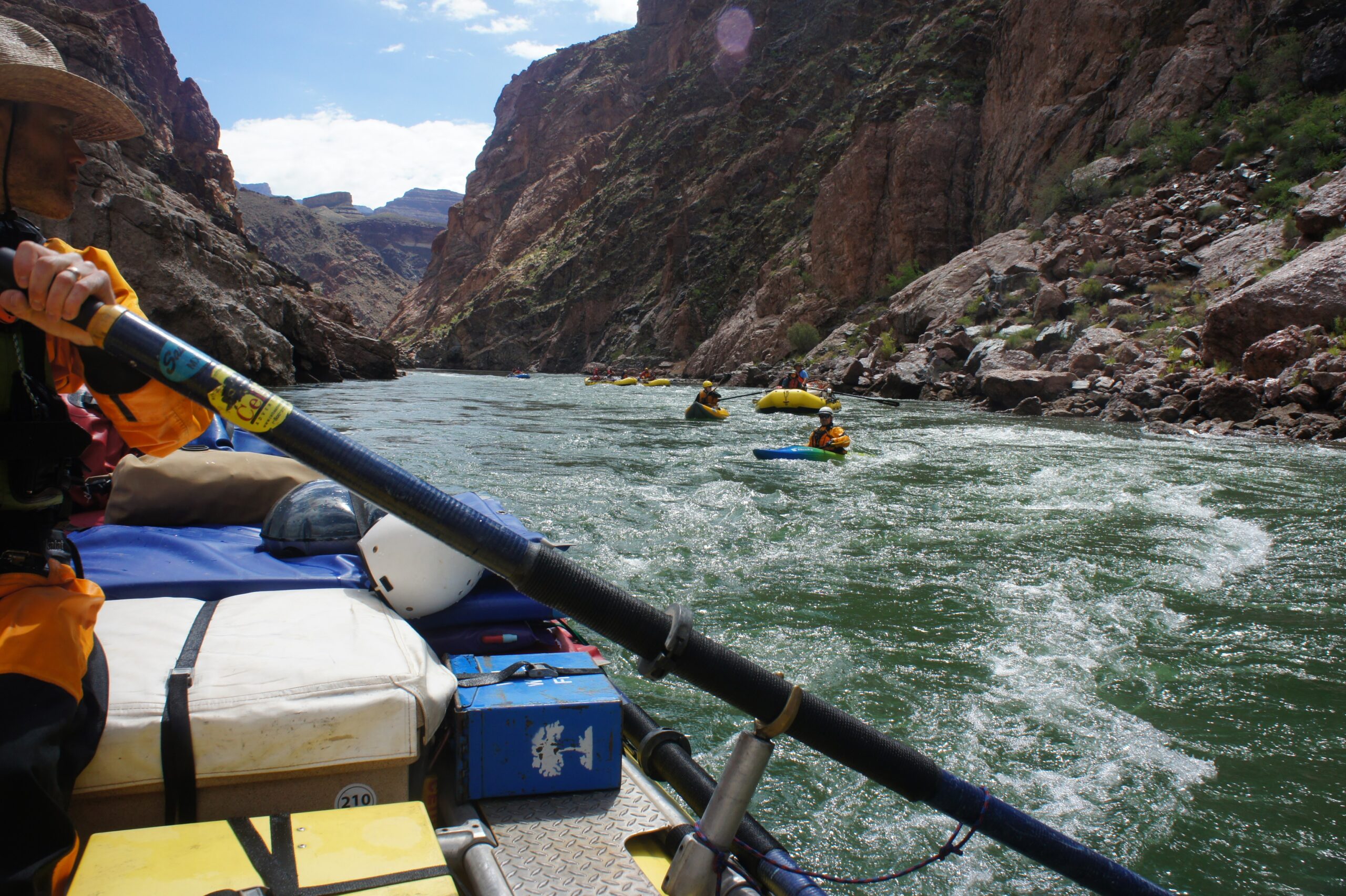 processed and pre-made sauces, marinades, dressings and condiments. These luxuries are a humbling a reminder that we were not really so far removed from a sterile isles of the grocery store. This assortment of jars, cans and dried goods combine with the kitty fresh vegetables and meats to make such delicacies as grilled chicken breasts marinated in honey mustard dressing with a cabbage slaw and rice, or spaghetti with meaty Ragu and canned vegetable salad or, the very ambitious, Thai coconut curry chicken and vegetables over jasmine rice. Through miracle of the supermarket and sterile preservation techniques, we had a veritable world gourmet pantry sealed away in ammo cans.
processed and pre-made sauces, marinades, dressings and condiments. These luxuries are a humbling a reminder that we were not really so far removed from a sterile isles of the grocery store. This assortment of jars, cans and dried goods combine with the kitty fresh vegetables and meats to make such delicacies as grilled chicken breasts marinated in honey mustard dressing with a cabbage slaw and rice, or spaghetti with meaty Ragu and canned vegetable salad or, the very ambitious, Thai coconut curry chicken and vegetables over jasmine rice. Through miracle of the supermarket and sterile preservation techniques, we had a veritable world gourmet pantry sealed away in ammo cans.
 During that initial meeting at Phantom Ranch, I sipped cups of coffee while, one by one, my fellow river rats sized up my kitchen capabilities. I confidently answered questions. “Are you comfortable cooking for a crowd?” “Sure.” “Do you know how to cook?” “Certified chef, here.” Ever cooked on a propane stove? Outdoors? “Yes and yes.”
During that initial meeting at Phantom Ranch, I sipped cups of coffee while, one by one, my fellow river rats sized up my kitchen capabilities. I confidently answered questions. “Are you comfortable cooking for a crowd?” “Sure.” “Do you know how to cook?” “Certified chef, here.” Ever cooked on a propane stove? Outdoors? “Yes and yes.”
While I had no knowledge of the river ahead and I often have a faltering relationship sleep, I did know food. So, at the end of my first day on the river, I confidently wielded a can opener and assured my crewmates, “No problem guys, I got this.”
Leave a Reply